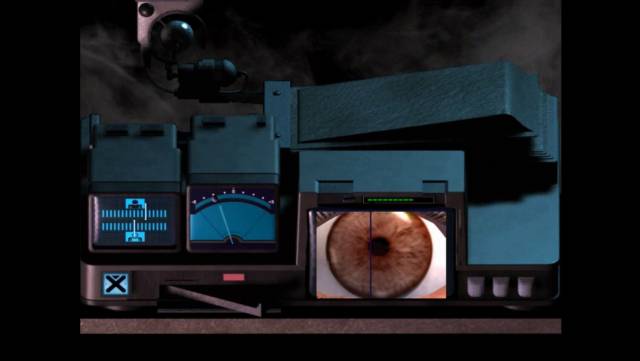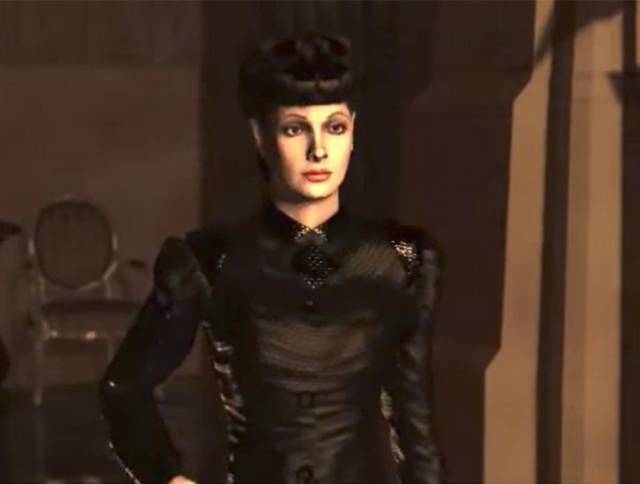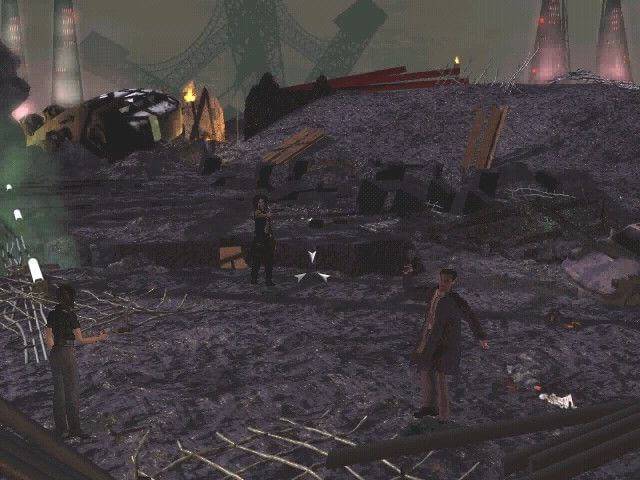
Human or replicant? The graphic adventure of Westwood Studios left the identity of its leading detective in the hands of the player.
Note: This report contains SPOILERS from the 1997 Westwood game and some original elements of the Ridley Scott movie.
Welcome to Los Angeles, November 2019. In our timeline, we have left that date behind, without flying cars and without a second home on Mars. In contrast, in another universe, some Nexus-6 had infiltrated the Earth, fugitives from slavery and desperate to prolong a short life with an expiration date. A blade runner, a police officer specializing in the search for replicants – artificial humans – was given the mission of hunting them. It would not be a simple assignment for Rick Deckard: in his journey, he would explore the fuzzy boundaries that separate humans from machines, in addition to deepening their true identity. This story marked a before and after in science fiction: Do Androids Dream of Electric Sheep ?, by Philip K. Dick was one of the precursors of the cyberpunk genre, which has also marked its plot in digital leisure with titles that they explore transhumanism, such as Red Strings Club or the future Cyberpunk 2077. This novel was adapted to the cinema as Blade Runner (Ridley Scott, 1982), a cult film with notable differences from the book, but that maintained the same spirit. Westwood Studios, in 1997, marked a milestone in the history of video games with Blade Runner, of the first titles to use 3D rendered characters and with real-time events that adapt randomly and to the player's decisions.
This graphic adventure starts from the same universe as K. Dick's novel and Ridley Scott's movie, but with notable additions that surprise the player and involve him in a family universe. Its protagonist, despite his resemblance to the Deckard played by Harrison Ford, is about Ray McCoy, rookie companion of the blade runner we already knew. The game's own synopsis reads: “Normally you have been assigned public demands and minor cases. But an unusual increase in the detection of replicants and your new lieutenant have provided you with the opportunity to investigate an ominous case of animal murder. ” The detective, summoned by Lieutenant Guzza, appears in his office with the same skepticism that Deckard showed in the film before his superior Bryant. McCoy will investigate a slaughter of animals in a pet store that will take you to a group of illegal Nexus-6 on planet Earth. In each game, the human or artificial identity of the non-player characters will be randomly shaped, and the decisions made by the player will shape their destiny.
A neo-noir adventure
Blade Runner, like his brothers, is a detective adventure that could be described as neo-noir, since it combines futuristic elements with the premises of black cinema. Mark T. Conard, in his essay The Philosophy of Film Noir (2006), defines the genre noir as: “Claustrophobic scenarios are flooded with shadows, the streets are soaked with rain, it always seems to be at night and the atmosphere is full of anguish. We recognize the stories, we love that noir, romantic and pessimistic style at the same time. We sympathize, and even identify, with the condemned antihero; Anxiety and sense of alienation are uncomfortably familiar. (…) There are a number of themes that characterize the noir cinema: the subversion of traditional values and the corresponding moral ambiguity – for example, the protagonist of the story, which is traditionally 'the good one', in the films noir makes moral decisions very questionable; the feeling of alienation, paranoia and cynicism; the presence of crime and violence; and the disorientation of the spectator. ”
 Image of the intro of Blade Runner, identical to the initial sequence of the film.
Image of the intro of Blade Runner, identical to the initial sequence of the film.
This definition serves as a mirror in Blade Runner, where we recognize several aspects of the video game that have also been transferred from the novel and the film. The story of McCoy, cradled by the blues of Vangelis, happens in a dark and rainy Los Angeles, and thanks to the literary work we know the everlasting contamination of kippel. The Earth of that November 2019 is an inhospitable place for the population that does not enjoy the privilege of living in the external colonies, where humanity has begun a second chance. McCoy's investigation begins in a reprehensible crime in his society: murder of animals. While this crime would now be considered atrocious, in the Blade Runner world animals are a protected and practically extinct species: empathy towards them is established as a scale when distinguishing Nexus-6 from humans. Many of the Voigt-Kampff test questions – used within the game to identify replicants – consist of hypothetical and extreme situations that involve the subject and an animal.
McCoy, on the other hand, is a cynical and lonely man, of whom no friends or human family are known. His closest relationship is his camaraderie with his body mates and, especially, with Crystal Steele, a blade runner that embodies the bitter hatred towards the replicants.
The crime of the animal shop will soon be linked to a group of replicants infiltrated on Earth. The player understands the laws that support the universe of Blade Runner and that are explained in the game's own introduction: “After a bloody rebellion of a Nexus-6 combat team in a sidereal colony, the Replicators were declared banned on Earth "Under penalty of death." Thus, the moral distinction is established between good (authentic humans and blade runners as the body of the State to protect the planet) and evil (replicators, murderers, invaders and dangerous; machines that are presupposed lack of empathy and feelings.Ray McCoy has fed on this system, and throughout the game he will experience events that will allow him to question the rules.The player himself, in addition, has already received a clue about the gray scale in which the moral moves Blade Runner: In the first scene, the clerk of the pet store Runciter tries to abuse his employee, a girl identical to the Pris Stratton embodied by Daryl Hannah – and looking much more childish. of the game break into the establishment to punish its owner, whom they add before slaughtering the store. Shortly after, we discovered that the seller cheated his clientele with artificial replicas of an imales.
 The Voigt-Kampff test within the game.
The Voigt-Kampff test within the game.
During his investigation, McCoy will learn more about his prey and, as we have said before, their identity as human or replicant will be random in each game. At one point, like Deckard, the detective will have doubts about his own person. It will be Dektora, during his interrogation, who raises the possibility of being a Nexus-6 with foreign memories implanted. In this case, it will be the player's decisions that outline the solution: if he stays true to his mission, McCoy will be human; If you sympathize with the replicants, you will discover that your empathy is due to being one of them. Louis Castle, co-founder of Westwood Studios and director of the game, does not have a canon version about the true identity of McCoy, and so he explains in his interview with youtuber RagnaRox last 2015: “Is Ray McCoy replicating? It depends on you. In the game, your decisions are perceived by the world around you, and it adapts to your actions. Thus, if you behave like a replicant, the world treats you as such, and if you behave as human, the world will also treat you as such. ”
The ambiguity between humans and replicants
Louis Castle explored during an interview at GamaSutra different aspects of the creative process of Blade Runner. In their hands they had a predefined universe, which would help shape the game, which required some care not to misunderstand their philosophy and maintain freedom of action for the player: “We needed to maintain the atmosphere and tone of the movie or everything It would be lost. We had to 'get rid' of the movie's story, since we didn't want the player to change it. Instead, we let it interact with the background of the movie and change many things that happened off camera. ” Throughout the game, we appreciate sequences identical to the movie. According to Castle himself, they did not use direct material, but they recreated the scenes "of 0 with 3D software".
 Rachael Tyrell receives Ray McCoy.
Rachael Tyrell receives Ray McCoy.
Castle himself defines how "ambiguity is one of the strongest points of the game", an idea that Dick transmitted in his novel and Ridley Scott maintained in his film. In the book, the differentiation between humans and replicants is blurred at all times: the former modify their emotions through the Penfield Cheer Organ, while the latter develop improper feelings of a machine, such as romantic love, fear or Creative restlessness
In the video game Blade Runner we also observe that ambiguity with certain parallels regarding the film, even both works share characters, such as Gaff, Eldon Tyrell and Rachael. McCoy, on the other hand, will discover what is the purpose of the group of replicants, who will not dislike that of Roy Batty: conscious of being alive and fearful of his next death, they want to go to their creator so that he increases his life expectancy.
 Final confrontation
Final confrontation
Clovis, the main villain of the game, has a lot in common with Batty: they are both the leader of their group, they have outstanding intelligence and they show off an eloquent speech. Clovis himself is also a lover of literature and quotes several poems by Blake, such as With happiness stretch'd across the hills, with which he says goodbye to his own life, just as Batty did with the monologue "Tears in the rain" . On the other hand, we have Dektora, an exotic dancer like Zhora – with dragonflies as an outfit instead of snakes – and Lucy, identical to Pris Stratton and with multiple doubts about herself. McCoy, in turn, goes through moments very similar to those of Deckard: he lives a chase with Clovis in the Bradbury building and, later, is also kidnapped by a couple of fake policemen who try to make him believe he is a replicant and that his police department is false, an event that happens in the novel.
Also, McCoy will discover that the replicants have established emotional ties with each other and with humans: Clovis and Dektora are lovers, and have adopted Lucy as their daughter. Ray himself, on the other hand, can start an affair with either of the two women if he and they are both replicants. Specifically, the relationship with Lucy herself can arouse certain discomforts due to her teenage physique and behavior, even knowing that it is a machine.
Thus, the player must take responsibility in an ambiguous world, where there is hardly any good and evil and where the separation between humans and replicants is full of buts and contradictions. "More human than humans" is the motto of the company Tyrell, manufacturer of the Nexus-6, with whom it has blurred the concept of artificiality. Of course, there is the Voigt-Kampff test, which we will apply in the same game. However, is it a foolproof test? Will we have guts to execute an identified replicant? What happens if we eliminate a human by mistake and what would our (involuntary) police brutality of our humanity say?
Blade Runner, like Ridley Scott's film and Philip K. Dick's novel, tells us again an exciting story, in a transmedia universe that the three works share, where he leaves us with a debate on the table in which Each answer generates new questions that, in the authentic and not fictitious 2019, are not easy to answer.

